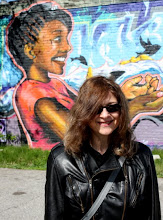Dan Brown is one of the world’s top-selling authors, despite a prose style distinguished by its stunning ineptitude. Consider the justly infamous opening sentence of his crypto-religious thriller The Da Vinci Code: “Renowned curator Jacques Sauniére staggered through the vaulted archway of the museum’s Grand Gallery.” Yes, it's important to know that the curator is “renowned” as he staggers through the archway. Or this: “On his hands and knees, the curator froze, turning his head slowly.” It’s hard to find writing worse than that.
But what does it matter? The Da Vinci Code sold more than almost any book in history, maybe even the Bible. Brown’s rapid page-turners are what people confined on long plane rides praise as “a good read.”
Director Ron Howard’s 2006 Da Vinci Code adaptation relieved the book of its one saving grace: briskness. Critics panned the movie as bloated and contrived. Stung by the reviews, Howard rethought his approach before adapting Brown’s Angels and Demons (which was published three years before Da Vinci, but which Howard treats as a sequel). With writers David Koepp and Akiva Goldsman, he condensed the plot and made things less stagy, using the handheld camera techniques he employed in Frost/Nixon. So, instead of characters standing around speechifying, they speechify while walking down hallways. More kinetic, but still boring.
But all the technique in the world can’t make a silk purse of the sow’s ear of Brown’s material. The plotting is beyond absurd, and the movie overflows with expository dialogue setting forth Brown’s poorly digested history of theology and science.
Tom Hanks reprises his role as Harvard "symbology" professor Robert Langdon, who is summoned to the Vatican to investigate a plot a plot by to kill four cardinals and destroy St. Peter’s Basilica with a stolen anti-matter device, whose beautiful developer, physicist Vittoria Vetra (Ayelet Zurer, who has very little to do in this movie), teams up with Langdon. The villains are said to be the Illuminati, the Enlightenment secret society cherished by conspiracy theorists everywhere. They want revenge for the Church’s sins against science, including the persecution of Galileo (which, in fact, has been greatly exaggerated).
There is a lot of dashing about the crowded streets of Vatican City, some spectacularly ghastly killings, a possibly murdered Pope, the usual ominous pseudo-Carmina Burana choral music, and one visually impressive scene involving an airplane and a parachute jump. Hanks seems strangely detached, though he’s the central character. Only Ewan McGregor, as the Pope’s conflicted chamberlain, shows any range of emotion, and his part is quite ridiculous. Those who enjoy bad movie writing can savor the ruthless killer's tortured explanation of why he doesn't just kill Langdon and Vitra, who are in hot pursuit of him (um, God didn't tell him to), and the unlikely hidden camera technology in the dead pontiff's office (smile, you're on Pope-cam!), which records the criminals explaining their murderous actions and intentions in vivid detail. How very convenient!
The movie lacks even the frisson of the forbidden. The Vatican isn’t bothering to protest it, as it did The Da Vinci Code, since the story is more or less pro-church. Now, what fun is that?
Monday, May 18, 2009
Vatican -- Oh, That Again?
Labels:
Angels and Demons,
Da Vinci Code,
Dan Brown,
Ron Howard,
Tom Hanks
Subscribe to:
Post Comments (Atom)

No comments:
Post a Comment